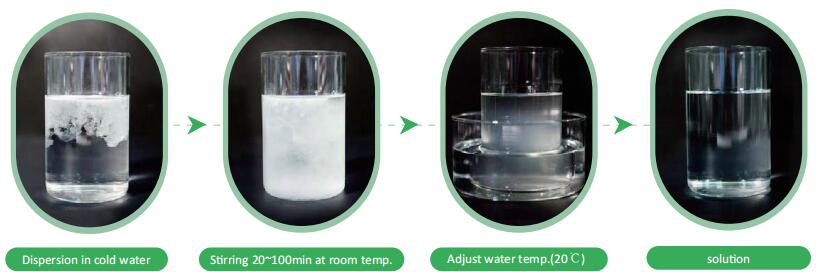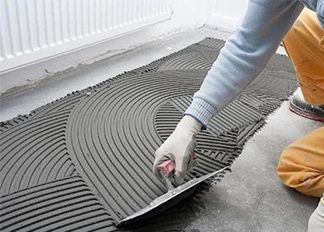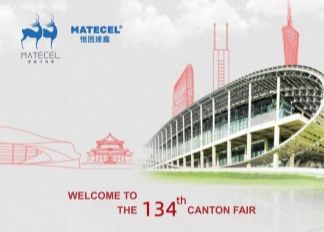Cellulose ether is a family of water-soluble polymers derived from cellulose, a natural polymer found in the cell walls of plants. These polymers are created through a chemical modification process known as etherification, in which various ether groups are introduced into the cellulose molecule. Cellulose ether derivatives have a wide range of industrial applications due to their unique properties and versatility.The color of cellulose ether is usually white or white-like powder. Cellulose ethers are a type of derivatives obtained by chemical modification of cellulose. They are usually water-soluble polymers that change the properties of cellulose mainly by introducing different ether groups, such as methyl, ethyl, hydroxypropyl, etc.
(1)Methylcellulose (MC): Methyl groups are added to cellulose to create methylcellulose. It is widely used as a thickener, stabilizer, and gelling agent in food products, pharmaceuticals, and construction materials.
(2)Hydroxypropyl Methylcellulose (HPMC): This cellulose ether combines both methyl and hydroxypropyl groups. HPMC is utilized in food, pharmaceuticals, cosmetics, and construction as a thickener, film former, and controlled-release agent.
(3)Ethylcellulose (EC): Ethylcellulose is formed by introducing ethyl groups into cellulose. It is primarily used in the pharmaceutical industry for controlled-release drug formulations and in the coating of pharmaceutical tablets.
(4)Carboxymethyl Cellulose (CMC): Carboxymethyl cellulose is produced by substituting carboxymethyl groups onto cellulose. It serves as a thickener, stabilizer, and binder in a wide range of applications, including food, pharmaceuticals, and personal care products.
(5)Hydroxyethyl Cellulose (HEC): Hydroxyethyl cellulose is created by introducing hydroxyethyl groups into cellulose. It is commonly used as a thickening and gelling agent in cosmetic and personal care products, as well as in pharmaceuticals.
(6)Sodium Carboxymethyl Cellulose (NaCMC): Sodium carboxymethyl cellulose is a water-soluble cellulose ether with applications in food, pharmaceuticals, textiles, and drilling fluids. It functions as a thickener, stabilizer, and viscosity modifier.
Cellulose ether is used for a wide range of applications across various industries due to its unique properties, including water solubility, thickening ability, film-forming properties, and more. Some common uses of cellulose ether include:
(1)Food Industry: Cellulose ethers like methylcellulose (MC) and carboxymethyl cellulose (CMC) are used as thickeners, stabilizers, and texture modifiers in food products such as sauces, dressings, ice creams, and baked goods. They can also prevent crystallization in confectionery.
(2)Pharmaceuticals: Cellulose ethers are used in pharmaceutical formulations as binders in tablet manufacturing, controlled-release agents, and film coatings to improve the taste and control drug release.
(3)Cosmetics and Personal Care: Hydroxyethyl cellulose (HEC) and hydroxypropyl methylcellulose (HPMC) are employed in cosmetics and personal care products as thickening agents, emulsion stabilizers, and film formers in items like shampoos, lotions, and creams.
(4)Construction: In the construction industry, cellulose ethers, especially hydroxypropyl methylcellulose (HPMC), are used in cement-based products. They act as water-retaining agents, thickeners, and binders, enhancing workability, adhesion, and performance of mortars, grouts, and renders.
(5)Paints and Coatings: Cellulose ethers can be used as rheology modifiers and thickening agents in water-based paints and coatings to control viscosity, prevent sagging, and improve application properties.
(6)Oil Drilling: Sodium carboxymethyl cellulose (NaCMC) is utilized in the oil drilling industry as a viscosifier and fluid-loss reducer in drilling muds to maintain wellbore stability.
(7)Textiles: Sodium carboxymethyl cellulose (NaCMC) is employed in textile processing as a sizing agent, thickener, and binder for printing pastes.
(8)Paper Industry: Cellulose ethers can be used in the paper industry to improve paper strength, retention of fillers and pigments, and the efficiency of papermaking processes.
(9)Detergents: Cellulose ethers can be found in some detergent formulations as thickeners and stabilizers.
(10)Adhesives: They can be used in adhesive formulations to improve adhesion, rheology, and consistency.
(11)Personal Hygiene Products: Cellulose ethers may be used in the production of diapers and sanitary products for their moisture-absorbing and thickening properties.
How are cellulose ethers made?

Here's a general overview of the process:
(1)Cellulose Extraction: Cellulose is initially extracted from plant-based sources, primarily wood pulp or cotton, through a process called pulping. This process involves breaking down the cellulose fibers and removing impurities.
(2)Alkalization: The extracted cellulose is treated with an alkali, typically sodium hydroxide (NaOH), to create alkali cellulose. This step is also known as mercerization, and it swells the cellulose fibers, making them more reactive.
(3)Etherification: Etherification is the key step in the production of cellulose ethers. In this step, alkali cellulose is reacted with various etherifying agents to introduce ether groups (organic substituents) onto the cellulose backbone. Common etherifying agents include:
Methyl chloride: For the production of methyl cellulose.
Ethyl chloride: For the production of ethyl cellulose.
Hydroxyethyl chloride: For the production of hydroxyethyl cellulose.
Hydroxypropyl chloride: For the production of hydroxypropyl cellulose.
(4)Purification: After etherification, the cellulose ether product is typically purified to remove any unreacted chemicals, byproducts, or impurities. This can involve washing, filtration, and other separation techniques.
(5)Drying: The purified cellulose ether is dried to remove any remaining moisture.
(6)Grading: The final product is graded based on its properties, such as viscosity, molecular weight, and degree of substitution, which can be adjusted during the etherification process to meet specific application requirements
If you want to know more about cellulose ethers, you can click on the professional section to get more information!
Exploring Hydroxy ethyl Cellulose Uses in Various Sectors
[ 2023. 10. 17 ]
Read MoreContact Us
Related Product
cellulose ether manufacturershydroxyethyl cellulose in paintHPMC Usescellulose etherhydroxypropyl methylcellulose (hpmc) powderHPMC Solubility Charthpmc productsHPMC uses in pharmaceuticalsGrades Of HpmcOEM HPMCHydroxypropyl Methylcellulose Uses In ConstructionDetergent Grade HPMC Blendinghydroxyethyl cellulose suppliershpmc supplierhydroxypropyl methylcellulose (hpmc) an overviewHow to make HPMC solutioncellulose manufacturersChina HPMCHydroxypropyl methylcellulose (HPMC) PriceHPMCShijiazhuang Henggu Jianxin Cellulose Co., Ltd.
Chemical Industrial Park, Xinji City, Hebei Province, China Post Code: 052360
Copyright 2023 Shijiazhuang Henggu Jianxin Cellulose Co., Ltd. All Rights Reserved


